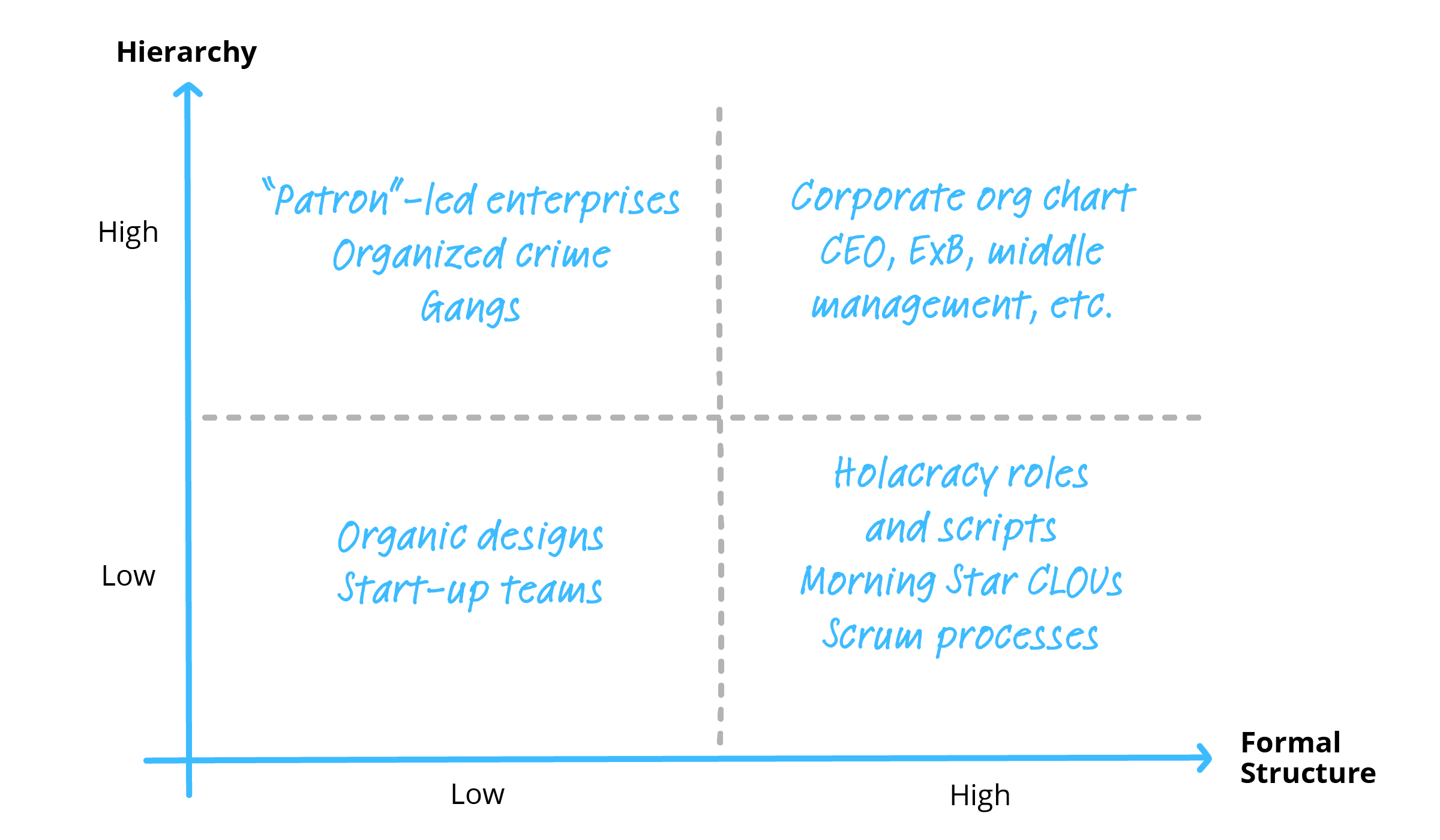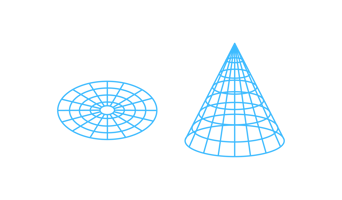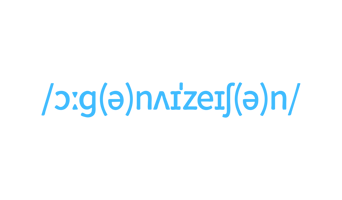A formal organizational structure and the organizational hierarchy are not the same thing. Separating the two conceptually allows a fresh perspective on the design of agile organizations, which rely heavily on structures but reduce managerial hierarchy at the same time.
One of the more frequent misconceptions about new models of responsive organizing is that the models are generally very flat, informal, and organic.
This belief is fueled by contrasting new models with corporate managerial hierarchies, which are generally characterized as overly formal, clumsy, and bureaucratic.
However, in order to get to the core of new organizational forms, it makes sense to conceptually separate hierarchy and formal structure, and contrast these two dimensions in a simple matrix (see graph below).
Hierarchy vs. formal structure: Examples for three development paths starting from small, organic designs
Organizations that have little hierarchy and little or no formal structure are organic organizations. These could be ad-hoc assemblages, working groups, or start-up teams (in the lower left quadrant of the matrix). Typically, these organizations are small and tend to disintegrate – or change their organizational form – as they grow.
Three development paths of organizational growth: Corporatization, Patronization, and “Flat Formalization”
In the conceptual model of our matrix, there are essentially three growth paths.
-
Corporatization: The first and most common development path in the business world is a build-up of both formal structures and hierarchy. The organic structure grows from the lower left to the upper right quadrant of the matrix, differentiating functions, processes, structures, and a middle and an upper management, etc.
-
Patronization: However, organic designs can also evolve without developing a strong formal structure – which represents the second development path. They can build upon a strong hierarchy instead, which is unbound by formal constraints. Think of organized crime or gang or clan structures, which generally tend to function without a conventional org chart. In the business world, owner-led companies with an all-powerful patron calling the shots would tend to fall in that category (upper left quadrant of the matrix).
-
Flat Formalization: Representing a third growth path, several new models of organizing have in common the fact that they reduce classic managerial hierarchies while simultaneously building strong formal structures. Those structures serve to solve coordination problems in the absence of a boss who makes decisions (and thus ensures a coordinated execution of separate outputs). The Holacracy rules are a case in point, as is the “Colleague Letter of Understanding” (CLOU) described in the often-cited Morning Star case. I would count the Scrum and Agile roles and processes generally as falling in that category, while they are mostly of a limited scale.
A freakishly strong formalization in codes, rule books or a “constitution” protects the system from falling back into hierarchical interaction models, with informal leaders emerging organically, counteracting the non-hierarchical decision-making processes.
Note that those formalized arrangements can be even more formal than those in large bureaucracies. And they have to be, as the models do not foresee an overarching authority, like a CEO or founder/owner, who could dissolve disputes through their power. The system must be designed to resolve disputes and make decisions by itself. In fact, we worked with one company that decided against introducing a self-management system on the grounds that they saw the model at odds with their people-oriented, entrepreneurial culture.




